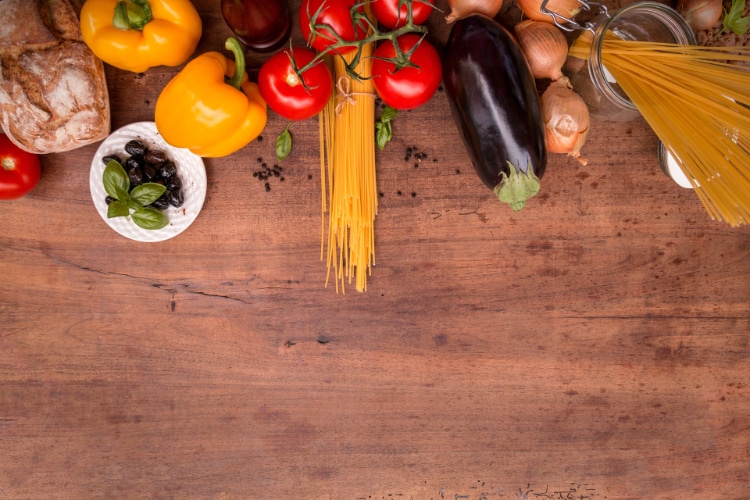
6 Nutrition Tips for Preventing Periodontal Disease
Inflamed and bleeding gums, stinky breath, and missing teeth can prevent you from wearing one of your greatest assets…your smile. However, gum disease can also lead to more serious dental conditions.
Gingivitis is the first stage of periodontal disease. This is when the gums and bones that support the teeth become infected and inflamed. Periodontitis, however, is when the gums detach from the teeth, leading to bone loss, loosening teeth, or even teeth falling out.
According to the Centers for Disease Control and Prevention (CDC), 47.2% of American adults over 30 have some sort of periodontal disease, and that number tends to increase with age.
Of course, good oral hygiene that includes flossing frequently and brushing your teeth twice a day can significantly reduce the risk of developing periodontitis. Also, booking regular dental exams allows your dentist to check for and diagnose periodontal disease before it worsens.
However, because periodontitis is an inflammatory disorder, a nutritious, anti-inflammatory diet can help with reducing inflammation, fighting harmful bacteria, and healing the gums. Here are six foods that are known to prevent periodontal disease.
Table of Contents
1. Blueberries
Blueberries are some of the greatest antibacterial and anti-inflammatory foods you can eat to prevent gum disease. They contain natural polyphenol compounds that stop harmful bacteria from adhering to teeth while inhibiting plaque buildup.
It’s also believed that blueberries could lead to new oral products aimed at combatting periodontal diseases. Polyphenols and other berry extracts are sugar-free and could become essential ingredients in toothpaste, mouthwash, and other oral rinses.
2. Green Tea
The next time you brew yourself a cup of green tea for a cozy evening indoors, rest easy knowing it’s helping you prevent periodontal disease, as well.
Green tea contains a high amount of catechins, which help reduce inflammation and the breakdown of bones and restrict unhealthy oral germs.
According to one study, green tea has antioxidative properties that decrease damage to the gum tissue and reduce gingival bleeding. The antioxidative properties also promote periodontal healing and lower the risk for bad breath, dental caries, and oral cancers.
3. Cauliflower and Broccoli
Previous research has shown that patients with coenzyme Q10 (CoQ10) deficiencies have a prevalence of gum disease and damage from periodontitis.
By adding more cauliflower and broccoli to your diet, you can increase the amount of CoQ10 in your body and reduce gingival inflammation. Foods rich in CoQ10 and antioxidants also help fight off bacteria that increase the risk of gum disease.
Other food sources with high CoQ10 amounts include spinach, mackerel, pistachios, fatty fish, soybeans, and avocados.
4. Salmon
Studies have shown that salmon and foods rich in omega-3 fatty acids can diminish periodontal diseases. For example, omega-3 has powerful anti-inflammatory properties that have been known to reduce inflammation for 24 hours at a time.
Consuming salmon and omega-3 fatty acids also produces resolvins and protectins that block your body from producing more pro-inflammatory proteins called cytokines.
If seafood isn’t a regular part of your diet or you don’t enjoy eating fish, then consider taking an omega-3 supplement instead.
5. Cacao
Sugary foods and drinks can lead to tooth decay and oral sensitivities. However, you may be surprised to learn that you can still enjoy a delicious treat every so often.
Like green tea, cacao has high amounts of catechins, which are flavonoids that help fight cavities and plaque formation. That’s right – this dense chocolate with espresso undertones is pretty beneficial for your oral health.
Additionally, cacao contains cacao bean husk (CBH), which hardens the enamel. Studies have also proven that its compounds are more effective than fluoride when fighting tooth decay.
If you’re looking to buy cacao at the grocery store, make sure it doesn’t contain a lot of sugar and opt for raw chocolate that’s 70% or more.
6. Probiotic Foods
The use of probiotics in disease management is still a relatively new development. Recently, studies have begun looking at probiotics and their impacts on oral health, including periodontal disease and gingivitis.
While findings varied on how well probiotics lowered gum inflammation and plaque buildup, there isn’t a true consensus on whether probiotics are a viable therapeutic alternative to fighting periodontitis.
Nevertheless, probiotics produce good bacteria in the mouth called Lactobacillus acidophilus, which can protect you from harmful oral pathogens.
Foods rich in probiotics include sauerkraut, kefir, yogurt, and fermented items.
Stop Periodontal Disease in Its Tracks
Eating a healthy, nutrient-rich diet can significantly improve your oral health and prevent gum disease. By incorporating more of these anti-inflammatory foods in your diet along with frequent brushing and flossing, you’ll never have to worry about your smile again.








